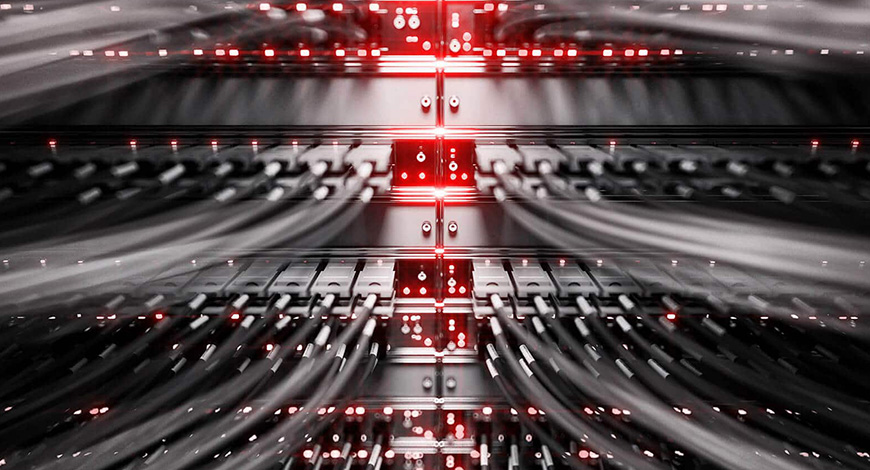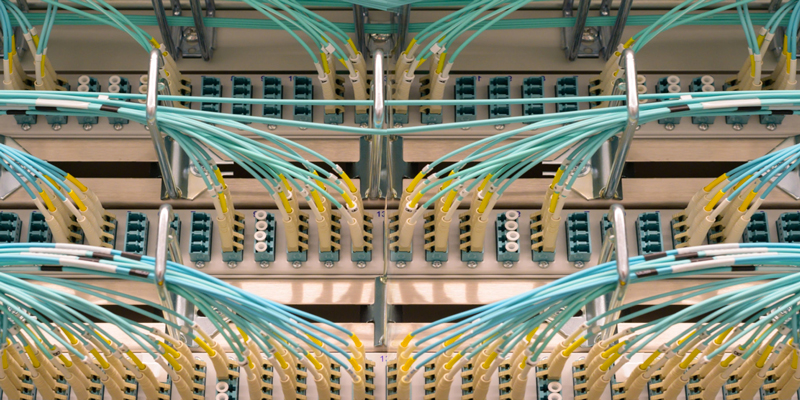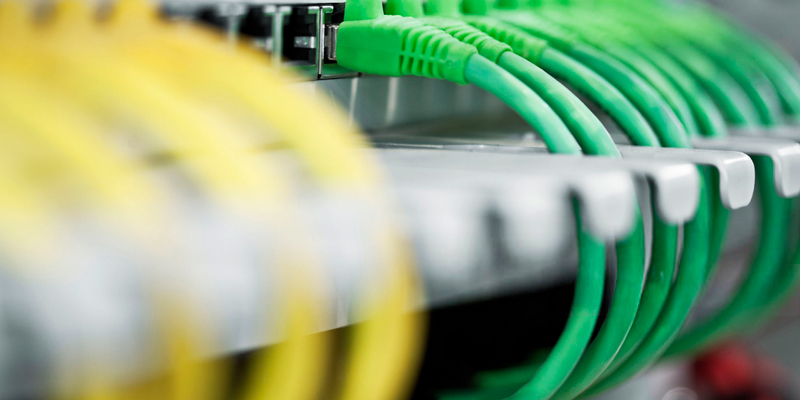Industry
A silver lining in the dark clouds of the pandemic

It is highly supportive for future upgrades, and has the perks of reduced installation time, cabling bulk, and congestion. Trends and technologies such as AI, AR and VR, and IoT are not only driving major changes in everyday lives, they are also forcing data center owners and operators to evolve, or risk being left behind. As such, demand for structured cabling from the IT and telecommunication, commercial, industrial, and other industries is surging.
Increased digitalization has led to higher demands not only for data, but also energy. Higher transmission rates and greater bandwidth requirements has led cable construction and design to change in order to accommodate end-user needs. Design changes include increased levels of screening and additional protection within cables. This, along with the growth of power over ethernet (PoE), has led to enhancements in cable constructions with respect to their pair geometry, material selection, conductor size and screening. All of these changes have enabled constructional adaptations to be in line with the increased demands placed on the cable itself. End-users are now opting to use tested and approved cables to ensure reliable transmission which fulfils data demands and minimizes possible device failures and downtime.
As enterprise come out of the pandemic
The ramping up of the digital economy fueled by emerging technologies and ever-increasing data has been placing huge demands on data center infrastructure for decades, with studies indicating a doubling of data center space and capacity between 2010 and 2019. While data center growth was already expected to continue increasing over the next decade, the COVID-19 pandemic is now changing the way people live and work and the way the world does business, further driving data center expansion. Data centers are in need to quickly add more capacity to support remote IT capabilities, more e-commerce, increased video streaming and gaming, and a greater need for applications like telemedicine, distance learning, and online collaboration. And they are focusing heavily on low-latency connectivity to do so.
Hyperscale and large cloud data centers tend to be early adopters that shape the industry, with their practices ultimately becoming the standard for data center design and deployment. Current connectivity trends within these spaces are supporting the need to quickly and cost-effectively ramp up capacity in response to emerging technologies and the demand for high-speed, low-latency performance in the evolving digital economy and COVID-19 world.
As enterprise businesses re-evaluate the public cloud due to a variety of challenges and begin to realize the benefits of cost-effective hyperconverged infrastructure technologies and techniques that are becoming more mainstream, allowing them to mimic the hyperscalers, they are adopting the right architecture, deployment topology, and components. As they do so, it makes sense to shift away from point-to-point cabling and back to the timeless, flexible and standards-based best practice of structured cabling.
Coming back with high-speed, low-latency deployments
Emerging IoT and IIoT technologies require faster transmission speeds and low-latency communication between servers and switches at the edge of the network. Migration strategies for switch-to-server connections that were once projected to advance from 10 Gbps to 40 Gbps have now evolved due to innovations in switching technology. When it comes to switch-to-server connections, these technology trends indicate that fiber optic structured cabling with an all-to-all cross connect scenario may ultimately make the most sense for modern data centers.
Data center managers embarking on modernization projects to support high-speed, low-latency performance would, therefore, be wise to keep their eyes on the evolving landscape and timeless benefits of structured cabling.
25 is the new 10
For switch-to-server connections, data centers have historically deployed 10 Gbps using either a top-of-rack (ToR) deployment where switches in each cabinet connect directly to the servers in that cabinet via short-length, high-speed twinax direct attach cables (DACs) or a middle-of-row (MoR) or end-of-row (EoR) deployment where switches are placed in one cabinet and connected to servers across an entire row using balanced twisted-pair copper Cat6A structured cabling. EoR deployments require distances of about 30 meter to reach servers in adjacent cabinets, while MoR deployments require about half of that.
While smaller enterprise data centers will still use 10 Gbps copper links for quite some time, emerging applications in larger data centers are beginning to tax the capacity of 10 Gbps links. It was originally anticipated that 10 Gbps would migrate to 40 Gbps based on a 10 Gbps per lane approach using non-return-to-zero (NRZ) encoding technology. However, the latest four-level pulse amplitude modulation (PAM4) encoding technology offers twice the bit rate and enables a 25 Gbps per lane approach.
This technology has shifted the previous 10/40/100 Gbps migration path for server connections to a less-disruptive 25/50/100/200 Gbps path, which is well-suited for leaf-spine fabric architectures because it can significantly reduce the number of physical ports required. As switches and servers are refreshed, enterprise data centers are, therefore, migrating to 25 Gbps, and it is expected that 40 Gbps applications will eventually phase out.
For ToR deployments in enterprise data centers, high-speed DACs capable of supporting 25 Gbps are already gaining ground. However, the short 5-meter distance supported by these DACs cannot accommodate EoR deployments. In 2016, Cat8 cabling was ratified by industry standards to support 30-meter 25 Gbps and 40 Gbps applications (i.e., 25GBASE-T and 40GBASE-T) in EoR deployments. However, due to the introduction of PAM4 technology and higher cost and power consumption, 25GBASE-T and 40GBASE-T PHY development never fully came to fruition, essentially preventing the adoption of BASE-T and Cat8 cabling for speeds beyond 10 Gbps.
Architecture and topology matter
From a topology standpoint, top-of-rack (ToR) deployments with short point-to-point connectivity took hold over the past decade as the primary means of supporting switch-to-server connections in the enterprise data center. However, many data center managers are now realizing that a ToR topology cannot effectively support a modern virtualized leaf-spine environment with the low-latency performance and scalability that the enterprise business demands. Only timeless, standards-based fiber-optic structured cabling offers the flexibility to support these environments.
As part of the reawakening and bringing IT resources back in house, enterprise businesses will need to examine their spaces and determine what they can support. If they do not have the power capacity to fill a cabinet, ToR would not make a lot of sense and the use of centralized switches will be a better option. There is also the waste factor. Those that started out with DACs to support 10-Gbit/sec server links and are now ready to migrate to higher speeds will have to throw the DACs away and buy something new. Distance, speed and lifecycle costs must all be evaluated for the best long-term design strategy.

A ToR configuration also means more switches to maintain, which can quickly become an operational burden. Port utilization is an additional cost concern. These unused switch ports across several cabinets can add up and ultimately equate to unnecessary switch purchases and related maintenance and power.
In contrast, fiber structured cabling is far better suited to supporting virtualized environments, enabling low-latency communications between servers and providing the flexibility and ease of scalability needed to quickly and cost-effectively expand. With longer-distance structured cabling, larger leaf switches can be placed at the end of a row of cabinets and connected to multiple servers within the row via structured cabling interconnects or crossconnects. With all the servers in a row connected to the same end-of-row (EoR) leaf switch, there is no extra switch hop when two servers housed in different cabinets need to communicate.
Unlike point-to-point assemblies, standards-based fiber cables available from a variety of reputable cable manufacturers are interoperable with much longer warranties and third-party verified performance to work with any vendor’s equipment.
The beauty of the crossconnect
The crossconnect volumes are increasing quarter-over-quarter. Clearly there is a lot of industry network activity and traffic volume growth and customers needing to connect to more service providers and more locations. Using fiber structured cabling throughout the data center enables the use of distribution areas with traditional crossconnects for flexible, standards-based connections between equipment, including leaf switches to servers, leaf switches to spine switches, and servers to storage devices.
The use of crossconnects eases expansion in virtualized server environments, as well as enabling the clustering of servers to more easily share compute and storage resources.
The beauty of the crossconnect is that by using fiber panels that mirror the ports on connecting equipment, data center managers enable an all-to-all scenario where any equipment port can be connected to any other equipment port by simply repositioning fiber patch cords at the front of the fiber panels.
New services can be quickly brought online at the crossconnect. Spine switches in the main distribution area (MDA) can be connected to the crossconnect via permanent fixed links and new leaf switches can be easily connected to unused spine switch ports at the crossconnect. This is especially ideal in a colocation data center when there is a need to quickly connect customer equipment to service provider equipment outside of the meet-me room and without having to access equipment, providing an additional level of security and assurance without interruption of data center operations. That is why the crossconnect is considered such a valuable asset in these environments.
The benefits of the crossconnect hold true within equipment distribution areas (EDAs) located in the enterprise customer colocation space or on-prem data center space. If new servers need to be added to a row, they can be easily connected to the EoR leaf switch at the crossconnect.
The distances supported by fiber structured cabling, from 100 meter to 10 kilometers depending on the application, also means that these crossconnects can be located virtually anywhere in the data center.
With structured cabling and crossconnects, the permanent portion of the channel between switches and patch panels remains unchanged, allowing active equipment to be left untouched and secure. This is also ideal for environments where switches and servers are managed by separate resources or departments.
How structured cabling market is faring in India
The India structured cabling market is projected to reach USD 800 million by 2023. Increasing the demand for copper cables, growing data centers market, increasing number of product launch activities by the market players, and rising demand for bandwidth solutions are the major factors driving the growth of the market. Tier-I cities, predominantly, Mumbai, New Delhi, Chennai, Bengaluru, and Pune, are expected to be the main data center hubs in the nation.
The market is driven by the increasing demand for FTTx. The need for higher bandwidth, high-speed, and lower installation cost are amongst the areas most of the digital workforce are looking for. The emergence of high-speed FTTH network service has pushed the demand for fiber optics and fiber optic cables, thereby propelling the growth. With the drop in office cabling business, the market is now shifted to fiber to home and telecom services.
The country is witnessing a shift from the old generation of cables to Cat6 cables. There is an increasing demand for improved cable performance that could provide greater bandwidth and higher data transfer rates. Cat6 cabling meets these needs by providing a larger copper conductor to reduce the signal attenuation between the transmitter and receiver, as well as more pair twists and a pair divider, often referred to as a spline, to physically separate the individual pairs, to reduce crosstalk.
Within the wire category segment, Cat7 wires are expected to witness the fastest growth in the coming years. The demand for Cat7 cables is surging on account of cost-effectiveness and providing double the bandwidth of Cat6 cables.
The eastern region of India is expected to grow at the highest rate on account of the rising number of IT hubs, as well as government initiatives to increase network connectivity in the Northeastern states. Cities such as Bhubaneswar and Agartala, are expected to be the major IT hubs in East India in the coming years. With the rising number of smart city projects in Patna, Muzaffarpur, Guwahati, Imphal, Agartala, Kohima, Aizawl, Pasighat, Itanagar, Gangtok, and Namchi, the structured cabling market is projected to advance in this area.
Major enterprises in the Indian structured cabling market, progressing at a 7.4 percent CAGR during the period 2020–2030, include TE Connectivity Ltd., 3C3 India Pvt. Ltd., Schneider Electric SE, CommScope Holding Company Inc., ABB Ltd., Corning Incorporated, Belkin International Inc., Panduit Corp, Molex LLC, Belden Inc., Reichle & De-Massari AG, Siemon Company, Furukawa Electric Co. Ltd., STL, Digisol, and Legrand Holding SA.
After relaxation of lockdown restrictions in India, the structured cabling market is slowly improving. Ever-increasing digitization, supported by the national government’s Digital India initiative, is taking the Indian market forward.
Companies are looking to make their premises world-class and intelligent while saving money at the same time with the implementation of structured cabling.
The pandemic forced companies to re-work on their GTM strategies. Earlier, OEMs imported products and cabling solutions were popular, however in the past couple of years, the industry witnessed many mergers in the market, resulting in a few OEMs to exit the space.
Global market dynamics
The structured cabling market is expected to grow from USD 10.9 billion in 2020 to USD 13.5 billion by 2025, at a CAGR of 4.3 percent. Hardware structured cabling solutions are anticipated to drive the market, holding around three-fourth market share.
The IT and telecommunications industry remains the leading vertical for the structured cabling manufacturers, with a projected share of around 43 percent through 2031.
The United States, the epicenter of the largest structured cabling market of North America, will remain in the spotlight, accounting for close to 90 percent share of this attractive regional market. As per the report US Telecom Industry Metrics & Trends 2020 targeted government financial support for broadband and favorable regulatory policies have encouraged more than USD 1.7 trillion investment from 1996 to 2020, which is rising steadily, creating new scope and opportunities. As key industries are projected to exhibit promising growth, structured cabling manufacturers are optimistic about increasing their sales footprint over the coming years.
The United Kingdom and France will remain at the forefront across the structured cabling market in Europe, with over one-third of demand share. According to the European Commission (EC), the international cableways industry is dominated by EU companies, which account for 90 percent of the industry worldwide. While 5G deployments are widening the scope for structured cabling manufacturers, steady growth of the IT and telecommunications industry is further fueling the sales of suppliers.
APEJ (Asia Pacific excluding Japan) will emerge as another lucrative market for structured cabling, and will register the highest growth over the next 10 years. China will account for around one-third of the demand in APEJ.
The structured cabling worldwide market includes CommScope, Nexans SA, Panduit Corp., Legrand, Corning Inc., Belden, Inc., Schneider Electric, Siemon, Furukawa Electric Co. Ltd., and R&M, among others. These suppliers have their manufacturing facilities spread across various countries across North America, Europe, APAC, and RoW.

DRIVER. Increasing demand for high-speed connectivity devices systems. The need for real-time information, which requires faster and continuous transmission of data is expected to arise in various verticals. The trend of advanced IP like VoIP, IP-based security systems, and IP videoconferencing is fueling the need for data, voice, and video signal convergence.
RESTRAINT. Emergence of wireless communication systems. The advantage of wireless communication over the use of fiber optics is that it requires less capital for installation. Another major benefit of RF and FSO is their non-interference with each other. Therefore, both systems can be used together to increase efficiency in any application.
OPPORTUNITY. High adoption of FTTH/FTTP owing to faster and uninterrupted flow of data. The increased need for high-speed data transmission and the growing use of broadband is expanding the fiber optic systems network and contributing to the growth of the structured cabling market globally. The fiber optic cables ensure the faster and uninterrupted flow of data as they are unaffected by electromagnetic interference (EMI). FTTH/FTTP dramatically increases the speed of communication for residential and commercial applications compared to the typical traditional cable modems.
CHALLENGE.Retrofitting older infrastructures. The majority of old infrastructures need modification and retrofitting to match up with the current demand for high-speed, reliable, and uninterrupted data, voice, and video transmission. The older buildings and work premises differ from the present standards and have inadequate space to accommodate current technology devices. The retrofitting of infrastructure is a challenging job for structured cabling vendors as the time required for planning and executing the upgrade is more than executing the new infrastructural project.
Way forward
Structured cabling manufacturers are optimistic about increasing their sales footprint over the coming years. As transmission speeds increase in data center and enterprise networks, it becomes increasingly important to adopt a cabling infrastructure strategy that considers multiple generations of network evolution. Deploying a cabling system that can support current and future needs requires thoughtful planning, and also requires an approach that is both robust and flexible.
An enterprise business and their supporting colocation providers leverage hyperconverged infrastructure technologies and techniques that originated in hyperscale and cloud data centers and are enabled by the timeless, flexible, and standards-based best practice of structured cabling, they will have the agility to cost-effectively expand as they strive to reinvent themselves in the COVID-19 era with new digital online tools and capabilities.















You must be logged in to post a comment Login